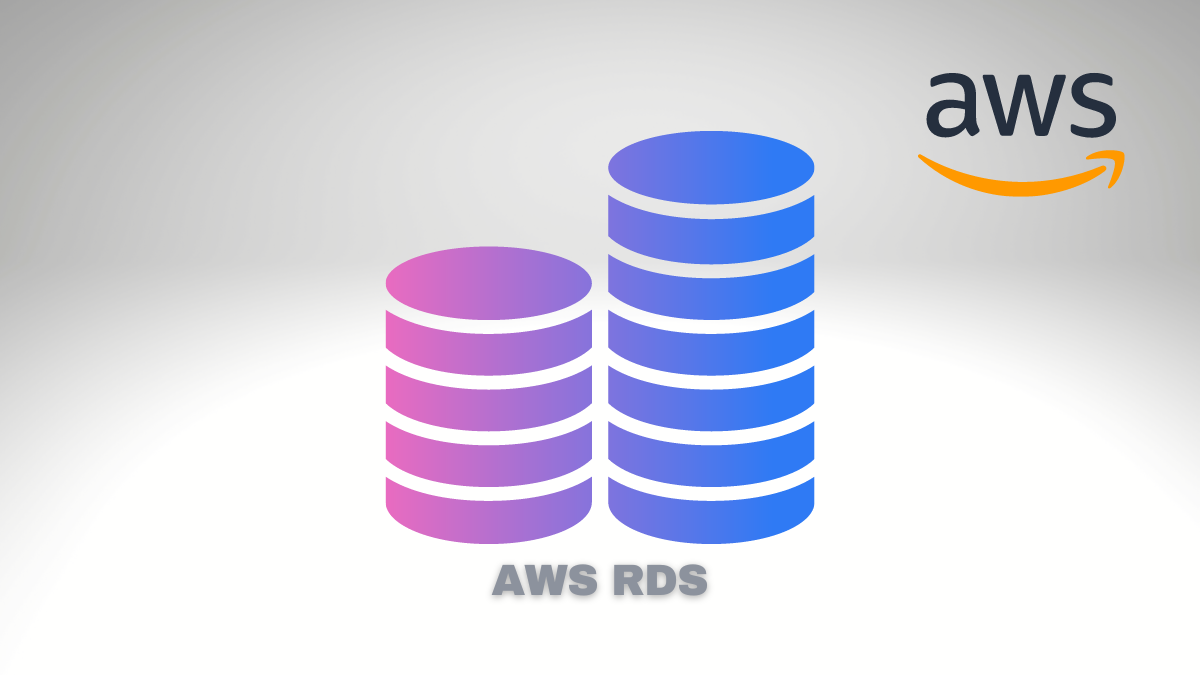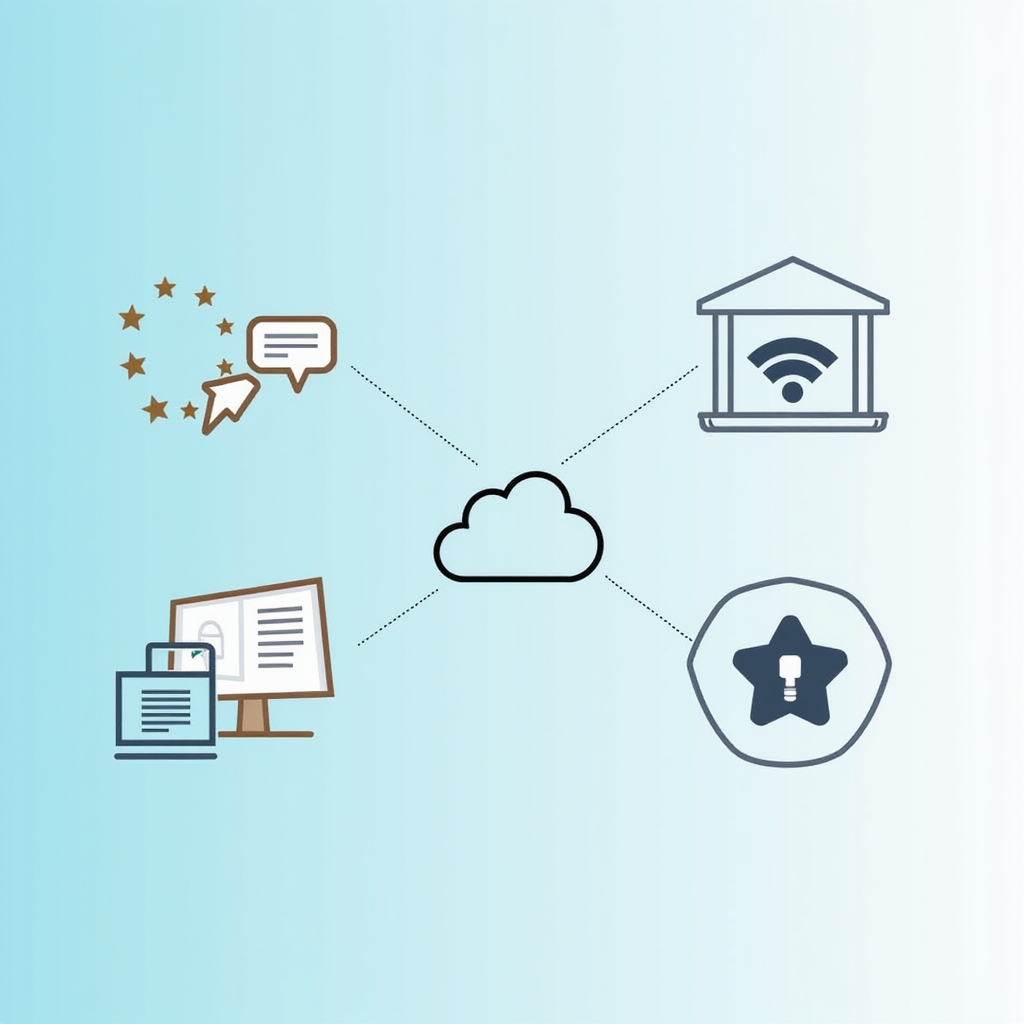An Introduction to AWS RDS: Understanding the Basics

As a business owner or system administrator, you may look for a better way to manage your database infrastructure. Traditional on-premise solutions can often be complex and expensive and require more time to maintain than you have available. AWS RDS is an Amazon Web Services (AWS) service that provides users an easy-to-use and cost-effective way to manage their databases in the cloud.
Everyday challenges can arise when trying to manage a database in the cloud. With AWS RDS, users don’t have to worry about complex configurations or expensive hardware and software upgrades – they can quickly spin up and scale out an Amazon Relational Database Service (RDS) instance without any hassle. Additionally, AWS RDS offers numerous features to help users optimize their database deployments and improve their experience.
In this article, we’ll take a look at the basics of AWS RDS. We’ll cover the benefits of using AWS RDS, key features available, setting up an instance, working with Amazon Relational Database Service (RDS) APIs and tools, security considerations for using RDS, best practices for managing your environment, cost management strategies, troubleshooting tips & tricks, and wrap up what you learned today about AWS RDs.
By the end of this article, you’ll better understand everything you need to know about Amazon Relational Database Service (RDS). Let’s get started!
We understand that managing a database can be a difficult and time-consuming task. AWS RDS is an Amazon Web Services (AWS) service that makes this process more manageable, with plenty of features to optimize your database deployments. In this article, we’ll take you through the basics of AWS RDS so you can get the most out of it. Let’s dive in!
Overview of AWS RDS
Amazon Relational Database Service (RDS) is a web service that makes it easier to set up, operate, and scale a relational database in the cloud. It provides cost-efficient, on-demand access to resources that can be rapidly scaled up or down depending on your application’s needs. With AWS RDS, you can quickly deploy and manage your relational databases cost-effectively.
Benefits of using AWS RDS
One of the main advantages of using AWS RDS is its reliability. The service uses high-availability architecture, ensuring your database is always running and available when needed. Additionally, Amazon RDS can automatically detect and recover from common failures, such as hardware or software failures, protecting the availability of your database.
AWS RDS also offers flexibility in terms of both capacity and instance types. You can quickly scale up or down depending on your application’s changing needs and deploy multiple database instances to meet different workload requirements. Additionally, AWS RDS offers various instance types with various RAM, storage, and processing power combinations.
Other benefits include cost-efficiency due to the pay-as-you-go pricing model, built-in security features such as encryption and high availability options, and the ability to access your database from anywhere with Amazon RDS APIs and tools.
Key features available in AWS RDS
AWS RDS offers numerous key features that can help users optimize their database deployments, such as automatic backups and snapshots, multi-Availability Zone (AZ) replication, read replicas, and point-in-time recovery. Additionally, Amazon RDS provides numerous options for monitoring the performance of your database, such as metrics and logs that can help you understand what’s going on in your environment.
Automatic Backups and Snapshots
Amazon RDS automatically creates and stores your database backups, which can be used to restore the data if necessary. You can set up automated backups, ensuring that you always have a copy of your data in the event of an unexpected failure. Additionally, Amazon RDS allows you to take point-in-time snapshots of your databases, which can be used to restore your database to the exact point it was at the time of the snapshot.
Multi-AZ Replication
Amazon RDS offers multi-Availability Zone replication, which allows you to create a replica of your primary database in another Availability Zone for added security and redundancy. This ensures that if one Availability Zone becomes unavailable, your database will still be accessible from the other.
Read Replicas
Amazon RDS also allows you to create read replicas of your primary database. This feature enables you to read data from a replica instead of the primary if needed, improving performance and reducing the load on the primary instance.
You can create up to five read replicas for each primary instance, and there is no additional charge for using this feature. Read replicas are highly available, and you can easily promote a replica to be the new primary instance in an outage. Read replicas also help improve scalability by allowing you to offload read-only queries from the primary instance.
Additionally, read replicas can be configured to replicate to different regions and are a great way to spread data across multiple locations for improved latency and disaster recovery. Amazon RDS also makes replicas in sync with the primary database accessible, ensuring that all data is up-to-date.
Point-in-Time Recovery
Amazon RDS also offers point-in-time recovery, allowing you to restore your database to any specific point within a certain retention period. This feature is helpful if you need to recover from accidental updates or deletes and can help reduce the downtime caused by an unexpected incident.
Monitoring with Metrics and Logs
Amazon RDS provides numerous monitoring options to help you keep track of your database instance’s performance. You can use Amazon CloudWatch Metrics and logs to monitor the various aspects of your database health, such as memory utilization, storage usage, number of connections, etc. Additionally, you can view metrics for all of your database instances in a single view, allowing you to identify any potential issues quickly.
You can also use the Amazon RDS console for diving deeper into your database instance’s performance metrics and logs. The console provides several dashboards that show various metrics in real time. You can also access detailed information about each metric for easy troubleshooting.
Security Features
Amazon RDS provides several features to help secure your databases. You can set up multiple security groups that allow or deny access to specific IP addresses and ports, making it easier to maintain the security of your database environment. Additionally, you can use Amazon’s encryption technology to protect data at rest and in transit. AWS also provides backup encryption; all data stored in RDS is encrypted with SSL.
You can set up audit logging to track user activity and detect potential security breaches. You can also enable multi-factor authentication (MFA) to protect sensitive accounts from unauthorized access. Additionally, you can control who has access to the database by using IAM roles and policies so that only those with the correct permissions can change your database. Finally, AWS provides a wide range of compliance certifications demonstrating its commitment to securing customer data.
By leveraging these security features, you can ensure your RDS environment is secure and compliant with industry regulations.
High Availability Options
In addition to the powerful features of AWS RDS, it also offers high-availability options for mission-critical applications. You can configure multiple availability zones with Amazon Aurora Multi-AZ clusters that provide additional protection against regional failures and outages. For example, the primary instance of your database cluster can fail over automatically to a secondary instance in another availability zone, allowing your application to continue functioning without downtime.
Access from Anywhere with RDS APIs and Tools.
Amazon Relational Database Service (RDS) provides several APIs and tools that you can use to access your data from anywhere. You can use the AWS Management Console, Command Line Interface (CLI), or Software Development Kit (SDK) to connect directly to your databases and make changes. Additionally, RDS supports several database engines such as MySQL, PostgreSQL, Oracle Database, and SQL Server.
Once you have set up your database instance, you can use Amazon RDS’s APIs and tools to manage the data within it. For example, you can use the AWS CLI to update your database’s security settings, create backups, or view performance metrics. Additionally, if you need to access data stored in other systems, you can use the AWS SDKs to connect and interact with those systems.
Setting up an instance of AWS RDS
Setting up an instance is straightforward: first, create a security group that defines which IP addresses can access the instance; second, create an RDS instance with the specific parameters you need; and finally, configure your environment. Once the setup is complete, you can manage your database with Amazon RDS APIs and tools.
Create a Security Group
The first step in setting up an instance of RDS is to create a security group. This group defines which IP addresses can access the RDS instance. You can specify a CIDR block, port range, and protocol type for each rule you add to your security group. It would be best to use vigorous security policies and regularly audit access logs to ensure only authorized users can access the database.
Create an RDS Instance
Once your security group is created, you can create an RDS instance that meets the requirements of your application. You must specify the engine type (e.g., MySQL, Postgres, etc.), storage capacity, compute resources, and other parameters. Selecting the correct configuration for your database instance is critical, as it will help you optimize performance and reduce costs.
Configure Your Environment
Finally, you can configure your environment with the settings specified in the RDS console. You can set up access permissions, backup schedules, maintenance windows, and other operational parameters. Additionally, you can use the RDS APIs and tools to manage your database instance.
Cost Management Strategies
Amazon RDS provides a wide range of pricing options that offer cost-effective solutions for smaller businesses. To get the most out of your budget, Amazon recommends using Reserved Instances (RI) and AWS Savings Plans. With RI, you can reserve capacity for a set period and benefit from significant cost savings compared to On-Demand pricing. Additionally, AWS Savings Plans provide additional discounts for EC2 and Fargate resources.
Working with Amazon RDS APIs & tools
Amazon offers various APIs and tools for interacting with RDS. These include the Amazon RDS Command Line Interface (CLI), the Amazon RDS Management Console, and AWS SDKs such as Java and Python. All these options enable you to configure and manage your database instances securely.
Amazon RDS Command Line Interface (CLI)
The Amazon RDS CLI is a valuable tool for automating database management tasks. It allows you to perform actions such as creating backups, restoring data, and monitoring performance. Additionally, the AWS CLI can be used with other AWS services to improve cost-efficiency and security.
Amazon RDS Management Console
The Amazon RDS Management Console provides a web-based interface for managing your database instance. The console can view performance metrics, create backups, and configure settings. Additionally, you can access the AWS Marketplace from within the console and quickly deploy applications.
AWS SDKs
Finally, AWS SDKs such as Java and Python make interacting with other AWS services easy. With the SDKs, you can connect to databases stored in other systems, access data files, and create applications for working with Amazon RDS instances.
Benefits of Using AWS SDKs for RDS
Include:
– Easy access to database systems stored in AWS, such as Amazon Aurora.
– Ability to build applications that use data from an RDS instance and interact with other AWS services.
– Access to the latest functionality offered by AWS – you don’t need to wait for a new release of your DBMS to gain access to new features.
– Ability to use the same programming language and development environment across AWS services.
– Automating many routine tasks, such as connecting to a database instance and running queries against it.
Using AWS SDKs for RDS makes building applications faster and easier. With the correct SDK, you can quickly connect to the exemplary RDS instance and execute SQL commands. Additionally, using a well-constructed script allows for increased scalability and reusability of code.
Security considerations when using AWS RDS
As with any database service, security is a top priority when using AWS RDS. Fortunately, Amazon provides numerous data protection options, such as rest and transit encryption, authentication mechanisms such as IAM roles, and more. Additionally, you can use third-party solutions to secure your environment further.
Data Encryption
Amazon RDS provides an encrypted storage option to protect data stored in the system. This encryption uses AWS critical management services (KMS) and hardware security modules (HSM). You can also encrypt specific columns within a database using Transparent Data Encryption (TDE) for enhanced data protection.
Authentication
You can use AWS Identity and Access Management (IAM) to manage access to your data on RDS securely. IAM roles allow you to control who has access to what databases and for how long. Additionally, Amazon offers Multi-Factor Authentication (MFA), an extra layer of security that requires users to provide two pieces of authentication before accessing the system.
Access Control
You can control what users can do with a database instance by controlling their access to different databases and tables. This security measure is enabled by assigning user privileges, such as read-only access or the ability to execute specific queries. Additionally, you can create policies for limiting certain functions when accessing the system from untrusted networks.
Third-Party Solutions for Security
Amazon also offers third-party solutions that can add additional security features to RDS. These solutions enable you to monitor, detect and protect data stored in Amazon RDS instances from potential threats. In addition, they provide advanced analytics capabilities that can help uncover suspicious activities and assist with compliance requirements.
Monitoring & Logging for Enhanced Security
AWS CloudWatch allows you to monitor the health of your database instance. It can provide real-time insights into system performance and alert you to potential issues or threats. Additionally, logging enables you to track activities performed against an RDS instance, allowing for improved security and compliance with regulations.
Using the right combination of security features can help make your application more secure when using Amazon RDS. With proper authentication, access control, encryption, and logging mechanisms in place, you can ensure that the data stored on the system is safe from potential threats. Additionally, third-party solutions provide an extra layer of protection for your applications. By taking these steps, you can ensure that your data remains safe and secure.
Backup & Disaster Recovery Options
Businesses of all sizes must have reliable backup and disaster recovery options to protect their data, applications, and systems. While each organization has unique needs, there are a few common approaches to consider when creating an effective backup and disaster recovery plan.
Amazon RDS enables you to create automated backups of your databases using a feature called point-in-time recovery (PITR). PITR allows instances to be recovered at any second during a retention period. This type of backup is especially useful if an organization needs to restore data that has been lost or corrupted due to human error or malicious activity. Additionally, Amazon RDS offers automated backup to Amazon S3 and snapshots of your database instances for manual or scheduled backup needs.
In a disaster, you can use failover capabilities built into Amazon RDS to quickly switch to a standby instance running in an alternate Availability Zone or Region. You can set up multiple standby instances in different Availability Zones and Regions to ensure your data is redundant and available when needed.
It’s important to note that Amazon RDS backups are incremental, meaning they only backup changes since the last backup. While this may save on storage costs, it also means that restoring a database instance can take longer than with a full backup. Additionally, it’s essential to regularly test backups to ensure that you can quickly recover your data during an unexpected outage or disaster.
By following best practices for backing up and restoring databases, organizations can protect their data from loss or corruption and reduce downtime during a disaster. Amazon RDS offers features that make it easy to set up automated backups, manage failover capabilities, and ensure your data is secure and available when needed.
Patching & Updates for Improved Security Posture.
Amazon RDS provides a stable and secure platform for running your database. To ensure that the underlying software is updated with the latest security patches and bug fixes, it is vital to keep your database instances patched regularly. Amazon RDS has built-in automated patching capabilities, which allow you to define when your instance will be updated and the level of maintenance window you would like to allow. The patching process is handled by Amazon RDS and can be monitored through the console or API.
Patching your instances regularly ensures that security vulnerabilities, such as SQL injection attacks and buffer overflow exploits, are addressed quickly. Additionally, it keeps your RDS environment in line with industry best practices, resulting in a more robust security posture and increased reliability. When setting up an instance, you should consider configuring Multi-AZ deployments for additional redundancy and enabling encryption at rest to help protect sensitive data.
Cost Management Strategies for Your RDS Deployment
Utilize Cost Optimization Strategies
Cost optimization is essential to any cloud service, and Amazon RDS is no exception. AWS offers a wide range of pricing options to help you save money on your RDS usage. The most basic cost savings come from using On-Demand Instances or Reserved Instances, which allow you to pay for a fixed usage over a specified period. Additionally, you can use AWS’s Database Activity Streams feature to monitor and manage your Amazon RDS utilization in real time.
You can also use the AWS Trusted Advisor tool to identify potential cost savings opportunities from unused Reserved Instances or idle database instances. This tool can also help you identify and address any potential security or performance issues associated with your Amazon RDS environment.
Finally, consider using the Cost Explorer service to analyze and compare your actual costs against estimated cost trends over time. This lets you decide when to spin up an On-Demand Instance or purchase Reserved Instances. Utilizing these cost optimization strategies ensures that your Amazon RDS usage is as efficient and cost-effective as possible.
Review Billing Reports and Unused Features Regularly
It is essential to regularly review your billing reports and confirm that you are not incurring any unnecessary charges due to unused features. AWS RDS makes it easy to update existing instances or create new ones with different feature sets, so checking for unused features can help ensure you only pay for the services you need. Additionally, reviewing your billing reports regularly can help you become aware of any spikes in usage so that you can make corrections if necessary.
FAQ
Q: What is Amazon RDS?
A: Amazon Relational Database Service (RDS) is a web service that makes it easy to set up, operate, and scale a relational database in the cloud. It provides cost-efficient and resizable capacity while automating everyday administrative tasks such as patching and backups.
Q: What are the benefits of using Amazon RDS?
A: The benefits of using Amazon RDS include scalability, cost-efficiency, automated backups, and patching, and improved security. Additionally, it provides access to a wide range of database engines such as MySQL, PostgreSQL, Oracle Database, and Microsoft SQL Server.
Q: How do I set up my database instance on Amazon RDS?
A: Setting up a database instance on Amazon RDS is easy. Log in to the AWS Console, select “RDS” from the services menu, and then follow the prompts to create your database instance. You can also use the AWS command-line interface or the Amazon RDS API to set up your instance.
Q: How do I secure my Amazon RDS environment?
A: To ensure your Amazon RDS environment is secure, use Multi-AZ deployments for additional redundancy and enable encryption at rest to help protect sensitive data. Additionally, reviewing your billing reports and confirming that you are not incurring any unnecessary charges due to unused features is vital.
Q: How do I manage my Amazon RDS environment?
A: To effectively manage your Amazon RDS environment, it is crucial to monitor database performance metrics, automate patching and backups, review your security settings regularly, and use Reserved Instances to save costs. Additionally, it would be best to use AWS CloudWatch alarms to receive notifications when your environment needs attention.
Q: What are the best practices for working with Amazon RDS APIs and tools?
A: The best practices for working with Amazon RDS APIs and tools include using IAM roles for database access, monitoring database performance metrics to ensure optimal performance, and ensuring that database connections are closed once they are no longer needed. Additionally, it is essential to use the latest version of Amazon RDS and keep up with any updates or patches that may be released.
Q: What should I know about troubleshooting issues in my Amazon RDS environment?
A: Troubleshooting issues in an Amazon RDS environment can be challenging. It is essential to review the Amazon RDS user guide and monitor key performance metrics to identify any issues that may arise. You should also check your security settings regularly and use CloudWatch alarms for notifications when something is wrong.
Conclusion
In conclusion, the Amazon Web Services Relational Database Service (AWS RDS) is a powerful resource for managing and storing data in the cloud. It offers various features to help organizations securely store and access their data across various platforms. Additionally, it provides enhanced security measures such as encryption at rest and in transit, authentication, and authorization. By following best practices for backing up and restoring databases, organizations can protect their data from loss or corruption and reduce downtime during a disaster. Finally, it’s essential to consider cost management strategies when deploying Amazon RDS to achieve the best possible solution with minimal expense.




Comments